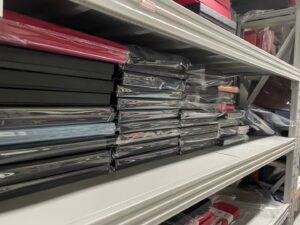Blog
What type of the best printing method will be used for your designed product?
What type of the best printing will be used for your designed product?
The process characteristics of different printing types are completely different, taking four major printing methods as examples:
The expression level of offset printing is rich and exquisite; Embossed products have clear outlines, powerful strokes, and bright ink colors; Gravure printing has clear lines, fine and beautiful appearance, and the ink layer for screen printing is thick and has a sense of relief; The concise color blocks and lines of flexographic printing products create a strong visual impact. Different printing types have their own specific design requirements, which must be taken into account during design.
For the design of offset printing products, it is important to pay attention to these key points: whether the resolution of the image is sufficient; Whether the trapping value is suitable; For small text, try to avoid overlapping four colors to avoid unnecessary printing difficulty; Whether the regular line cutting line is complete; Try to avoid designing large format full-page solid color blocks; The directional relationship between graphics and text and paper fibers, fully considering the requirements of post processing, etc.
The design of gravure printing products should avoid multicolor overprinting. Because most of the printing materials used in gravure printing have large thermal scalability, coupled with thermal deformation during high-speed printing, making printing overprinting more difficult, it is important to avoid multicolor overprinting when designing without affecting the design effect.
When designing flexographic prints, the following aspects should be avoided: avoiding designing too small text and too thin lines; Avoid overprinting lines and text in two or more colors; Avoid designing small, contrasting text and lines.
When designing products for screen printing, the requirements for the accuracy of the lines and dots of the original text used for screen printing are also different from those for ordinary printing methods. If the lines and dots of the original manuscript are very fine, it is very difficult to use screen printing for plate making. Therefore, screen printing technology is not suitable for reproducing fine lines and dots of the original manuscript.
When selecting materials, it is necessary to consider both the variety and the specification of the material. The printability of different types of printing materials varies greatly, even completely, and the actual performance of the product varies greatly. Such as single sided coated paper, single sided offset paper, single sided coated cardboard, coated paper, white paper, gold paper, aluminum foil paper, etc.
The issue of material specifications must be considered to avoid additional costs due to improper selection of material specifications. Taking the printing paper for books and periodicals as an example, the cover, insert, and backing pages of books and magazines generally use 100 to 150 grams of paper within 200 pages of the cover, and 120 to 180 grams of paper above 200 pages; 80-150g paper for inserting pages; The lining is generally selected between 80 and 150 grams depending on the thickness of the book.

